 W
WThe Bert Bolle Barometer is a large water barometer. At over 12.5 metres tall, it is recognized as the largest barometer in the world by The International Guinness Book of Records. The instrument was created in 1985 in the Netherlands; in 2007 it was reinstalled in the new Visitor Centre of Denmark, Western Australia and was removed from there in 2011.
 W
WA came is a divider bar used between small pieces of glass to make a larger glazing panel.
 W
WCeramic glaze is an impervious layer or coating of a vitreous substance which has been fused to a ceramic body through firing. Glaze can serve to color, decorate or waterproof an item. Glazing renders earthenware vessels suitable for holding liquids, sealing the inherent porosity of unglazed biscuit earthenware. It also gives a tougher surface. Glaze is also used on stoneware and porcelain. In addition to their functionality, glazes can form a variety of surface finishes, including degrees of glossy or matte finish and color. Glazes may also enhance the underlying design or texture either unmodified or inscribed, carved or painted.
 W
WA display case is a cabinet with one or often more transparent tempered glass surfaces, used to display objects for viewing. A display case may appear in an exhibition, museum, retail store, restaurant, or house. Often, labels are included with the displayed objects, providing information such as description or prices. In a museum, the displayed cultural artifacts are normally part of the museum's collection, or are part of a temporary exhibition. In retail or a restaurant, the items are normally being offered for sale. A trophy case is used to display sports trophies or other awards.
 W
WInsulating glass (IG) consists of two or more glass window panes separated by a vacuum or gas-filled space to reduce heat transfer across a part of the building envelope. A window with insulating glass is commonly known as double glazing or a double-paned window, triple glazing or a triple-paned window, or quadruple glazing or a quadruple-paned window, depending upon how many panes of glass are used in its construction.
 W
WElectron-stimulated luminescence (ESL) is production of light by cathodoluminescence, i.e. by a beam of electrons made to hit a fluorescent phosphor surface. This is also the method used to produce light in a cathode ray tube (CRT), but, unlike CRTs, ESL lamps do not include magnetic or electrostatic means to deflect the electron beam.
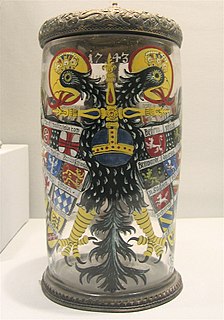 W
WEnamelled glass or painted glass is glass which has been decorated with vitreous enamel and then fired to fuse the glasses. It can produce brilliant and long-lasting colours, and be translucent or opaque. Unlike most methods of decorating glass, it allows painting using several colours, and along with engraving, has historically been the main technique used to create the full range of image types on glass.
 W
WA fiber-optic cable, also known as an optical-fiber cable, is an assembly similar to an electrical cable, but containing one or more optical fibers that are used to carry light. The optical fiber elements are typically individually coated with plastic layers and contained in a protective tube suitable for the environment where the cable will be deployed. Different types of cable are used for different applications, for example, long distance telecommunication, or providing a high-speed data connection between different parts of a building.
 W
WFiberglass molding is a process in which fiberglass reinforced resin plastics are formed into useful shapes.
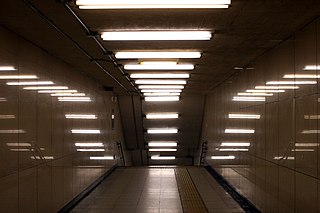 W
WA fluorescent lamp, or fluorescent tube, is a low-pressure mercury-vapor gas-discharge lamp that uses fluorescence to produce visible light. An electric current in the gas excites mercury vapor, which produces short-wave ultraviolet light that then causes a phosphor coating on the inside of the lamp to glow. A fluorescent lamp converts electrical energy into useful light much more efficiently than incandescent lamps. The typical luminous efficacy of fluorescent lighting systems is 50–100 lumens per watt, several times the efficacy of incandescent bulbs with comparable light output.
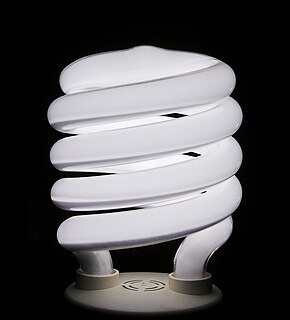 W
WA gas-filled tube, also known as a discharge tube, is an arrangement of electrodes in a gas within an insulating, temperature-resistant envelope. Gas-filled tubes exploit phenomena related to electric discharge in gases, and operate by ionizing the gas with an applied voltage sufficient to cause electrical conduction by the underlying phenomena of the Townsend discharge. A gas-discharge lamp is an electric light using a gas-filled tube; these include fluorescent lamps, metal-halide lamps, sodium-vapor lamps, and neon lights. Specialized gas-filled tubes such as krytrons, thyratrons, and ignitrons are used as switching devices in electric devices.
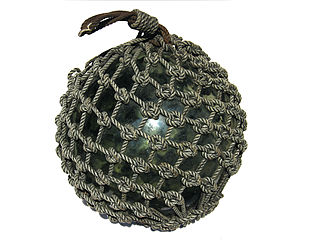 W
WGlass floats, glass fishing floats, or Japanese glass fishing floats are popular collectors' items. They were once used by fishermen in many parts of the world to keep their fishing nets, as well as longlines or droplines, afloat.
 W
WGlass tiles are pieces of glass formed into consistent shapes.
 W
WA glass-bottom boat is a boat with one or more sections of glass, or other suitable transparent material, below the waterline allowing passengers to observe the underwater environment from within the boat. The view through a glass bottom is better than simply looking into the water from above, because one does not have to look through optically erratic surface disturbances. The effect is similar to that achieved by a diving mask, while the passengers are able to stay dry, out of the water.
 W
WGlass-to-metal seals are a very important element of the construction of vacuum tubes, electric discharge tubes, incandescent light bulbs, glass encapsulated semiconductor diodes, reed switches, pressure tight glass windows in metal cases, and metal or ceramic packages of electronic components.
 W
WGlassing is a physical attack using a glass or bottle as a weapon. Glassings can occur at bars or pubs where alcohol is served and such items are readily available. The most common method of glassing involves the attacker smashing an intact glass in the face of the victim. However, the glass may be smashed before the attack, and then gripped by the remaining base of the glass or neck of the bottle with the broken shards protruding outwards. Glassing is easily prevented by using containers made from plastic or tempered glass instead, but they suffer from unpleasant feel (plastic) and higher expense. These alternative containers are slowly being adopted in areas with a high frequency of glassing, such as the United Kingdom and Australia. In New Zealand, a similar phenomenon is referred to as "bottling".
 W
WThe list of glassware includes drinking vessels (drinkware) and tableware used to set a table for eating a meal, general glass items such as vases, and glasses used in the catering industry. It does not include laboratory glassware.
 W
WGorilla Glass is a brand of chemically strengthened glass developed and manufactured by Corning, now in its seventh generation, designed to be thin, light and damage-resistant. As a brand, Gorilla Glass is unique to Corning, but close equivalents exist, including AGC Inc.'s Dragontrail and Schott AG's Xensation.
 W
WInsulating glass (IG) consists of two or more glass window panes separated by a vacuum or gas-filled space to reduce heat transfer across a part of the building envelope. A window with insulating glass is commonly known as double glazing or a double-paned window, triple glazing or a triple-paned window, or quadruple glazing or a quadruple-paned window, depending upon how many panes of glass are used in its construction.
 W
WLamination is the technique/process of manufacturing a material in multiple layers, so that the composite material achieves improved strength, stability, sound insulation, appearance, or other properties from the use of the differing materials, such as plastic. A laminate is a permanently assembled object created using heat, pressure, welding, or gluing.
 W
WA mirror is an object that reflects an image. Light that bounces off a mirror will show an image of whatever is in front of it, when focused through the lens of the eye or a camera. Mirrors reverse the direction of the image in an equal yet opposite angle from which the light shines upon it. This allows the viewer to see themselves or objects behind them, or even objects that are at an angle from them but out of their field of view, such as around a corner. Natural mirrors have existed since prehistoric times, such as the surface of water, but people have been manufacturing mirrors out of a variety of materials for thousands of years, like stone, metals, and glass. In modern mirrors, metals like silver or aluminum are often used due to their high reflectivity, applied as a thin coating on glass because of its naturally smooth and very hard surface.
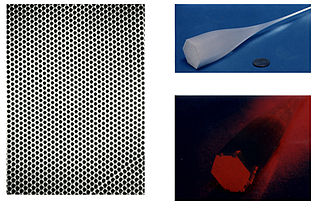 W
WNanochannel glass materials are an experimental mask technology that is an alternate method for fabricating nanostructures, although optical lithography is the predominant patterning technique.
 W
WA non-reversing mirror is a mirror that presents its subject as it would be seen from the mirror. A non-reversing mirror can be made by connecting two regular mirrors at their edges at a 90 degree angle. If the join is positioned so that it is vertical, an observer looking into the angle will see a non-reversed image. This can be seen in places such as public toilets when there are two mirrors mounted on walls which meet at right angles. Such an image is visible while looking towards the corner where the two mirrors meet. The problem with this type of non-reversing mirror is that there is usually a line down the middle interrupting the image. However, if first surface mirrors are used, and care is taken to set the angle to exactly 90 degrees, the join can be made almost invisible.
 W
WA rhinestone, paste or diamante is a diamond simulant originally made from rock crystal but since the 19th century from crystal glass or polymers such as acrylic.
 W
WA shadow box is an enclosed glass-front display case containing an object or objects presented in a thematic grouping with artistic or personal significance. The grouping of the objects and the depth effect created by their relative heights from the backing creates a dramatic visual result.
 W
WA sight glass or water gauge is a type of level sensor, a transparent tube through which the operator of a tank or boiler can observe the level of liquid contained within.
 W
WA silver claret jug is a wine jug made of glass and silver for claret, which is the British name for French red Bordeaux wine.
 W
WA snow globe is a transparent sphere, traditionally made of glass, enclosing a miniaturized scene of some sort, often together with a model of a town, landscape or figure. The sphere also encloses the water in the globe; the water serves as the medium through which the "snow" falls. To activate the snow, the globe is shaken to churn up the white particles. The globe is then placed back in its position and the flakes fall down slowly through the water. Snow globes sometimes have a built-in music box that plays a song. Some snow globes have a design around the outerbase for decoration. Snow globes are often used as a collectible item.
 W
WStone damage, or stone-chip, is the damage that gravel and small stones can make to a vehicle.
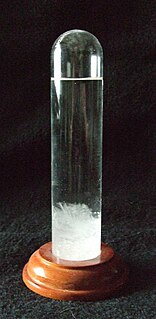 W
WThe storm glass or chemical weather glass was an instrument which was proposed as a method for predicting weather. It consisted of a special liquid placed inside a sealed transparent glass. The state of crystallization within the liquid was believed to be related to the weather. The inventor is unknown but the device became popular in the 1860s after being promoted by Admiral Robert FitzRoy who claimed thatif fixed, undisturbed, in free air, not exposed to radiation, fire, or sun, but in the ordinary light of a well-ventilated room or outer air, the chemical mixture in a so-called storm-glass varies in character with the direction of the wind, not its force, specially from another cause, electrical tension.
 W
WA vacuum tube, an electron tube, valve or tube, is a device that controls electric current flow in a high vacuum between electrodes to which an electric potential difference has been applied.
 W
WVitreous enamel, also called porcelain enamel, is a material made by fusing powdered glass to a substrate by firing, usually between 750 and 850 °C. The powder melts, flows, and then hardens to a smooth, durable vitreous coating. The word comes from the Latin vitreum, meaning "glass".
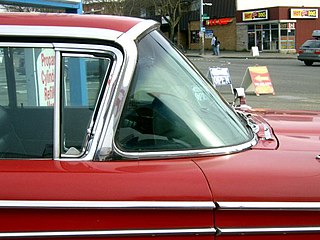 W
WThe windshield or windscreen of an aircraft, car, bus, motorbike, truck, train or tram is the front window, which provides visibility while protecting occupants from the elements. Modern windshields are generally made of laminated safety glass, a type of treated glass, which consists of, typically, two curved sheets of glass with a plastic layer laminated between them for safety, and bonded into the window frame.